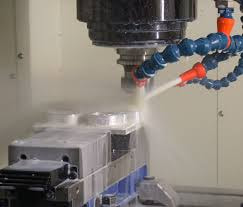Metalworking fluid is used to lubricate and cool the workpiece, tool, or abrasive during the metalworking process. Its purpose is to enhance processing efficiency, workpiece precision, surface quality, and prolong the life of tools and abrasives. Apart from choosing the tool, die material, geometric parameters, heat treatment specifications, and processing volume according to reasonable processing conditions, it is also important to select the metalworking fluid correctly.

Metal cutting is a process in metalworking that involves removing excess metal from the workpiece using cutting tools (such as blades or grinding wheels) to achieve the desired shape, size, and surface quality of finished or semi-finished workpieces.
Methods of metal cutting: sawing, turning, milling, planing, grinding, drilling, reaming, boring, tapping, threading, etc.
Typical machining surfaces: inner circle, outer circle, hole, plane.
According to surface quality: rough machining, semi-finish machining, finish machining, ultra-finish machining.
Surface roughness: Ra is used to indicate surface quality, and the unit is μm.
Explore more:According to the angle at which the metal material can be cut: Easy-to-cut materials: non-ferrous metals such as aluminum, aluminum alloys, magnesium-zinc alloys, brass, lead bronze. Common materials: non-ferrous metals such as copper, high-strength bronze, ferrous metals such as cast iron, medium and low carbon steel. Difficult-to-cut materials: non-ferrous metals such as titanium, nickel, high-alloy steels such as heat-resistant steel, high-speed steel, stainless steel, medium and low carbon alloy steels such as manganese steel, nickel-chromium steel, bearing steel, carbon steel, nickel-chromium-copper alloy steel.
Common cutting tool materials include: high-speed steel, tool steel, cobalt alloy, sintered hard alloy, metal ceramic, cubic boron nitride, synthetic diamond, etc. (general tool steel 200~300℃, high-speed steel 600℃, hard alloy 1000℃, cubic boron nitride 2000℃).
The types of cutting fluids include oil-based (animal oil, vegetable oil, mineral oil) and water-based (emulsion, microemulsion, synthetic).
International classification standard ISO 6743/7----1986 has a total of 17 categories, of which 8 categories (MHA——MHH) are non-water-soluble metalworking fluids, and 9 categories (MAA—MAI) are water-soluble metalworking fluids. These varieties are suitable for cutting, grinding, electrical discharge machining, thinning rolling, extreme pressure, wire drawing, forging, and rolling, etc., under 44 different processing conditions.
Domestic standards In China, the national standard GB7631.5—89 "Classification of lubricant-related products (L class): Part 5: M group (metalworking)" is equivalent to ISO 6743/7—1986. The main products based on lubrication requirements are pure oil, namely MH class (including MHG grease wax and MHH soap powder solid lubricant or their mixtures), and the main products based on cooling requirements are water-based solutions, namely MA class.
L—MHA pure mineral oil is mostly used for heavy-duty cutting and honing (beneficial for iron powder settling). L—MHB fatty oil (or oil-based additives) + mineral oil are mostly used for precision turning of screw rods, hobbing, gear shaving, and broaching. L—MHC non-active extreme pressure cutting oil, mineral oil + non-active extreme pressure additives. L—MHD active extreme pressure cutting oil, mineral oil + reactive strong sulfur-based extreme pressure additives. L—MHE and L—MHF compound cutting oil, mineral oil + oil-based additives and extreme pressure additives.
L—MAA rust preventive emulsion (oil 50—80%). L—MAB rust preventive lubricating emulsion, containing animal and vegetable fats or long-chain fatty acids. L—MAC extreme pressure emulsion containing extreme pressure agents, suitable for heavy-duty cutting such as threading and broaching. L—MAD extreme pressure emulsion containing extreme pressure agents, suitable for heavy-duty cutting such as threading and broaching. L—MAE microemulsion (oil content 10%—30%), working fluid emulsified particles below 0.1 micrometers. L—MAF extreme pressure emulsion containing extreme pressure agents, suitable for medium to heavy-duty cutting. L—MAG chemical synthetic cutting fluid. L—MAH extreme pressure chemical synthetic cutting fluid. L—MAI water-mixed lubricants and pastes.
Previous
None
Next
None
Comments
Please Join Us to post.
0